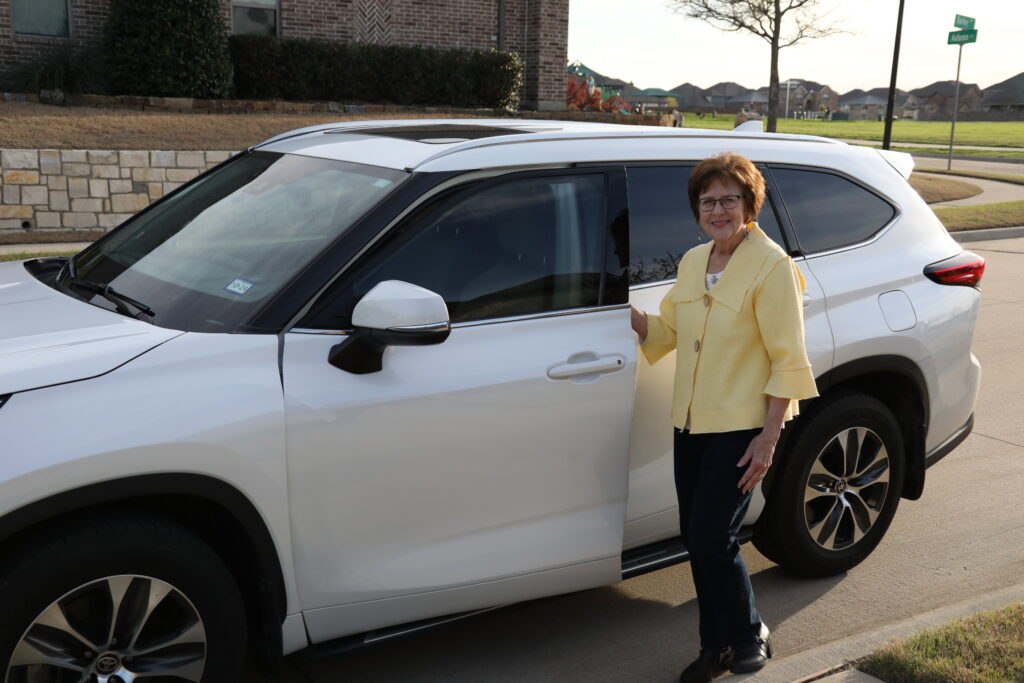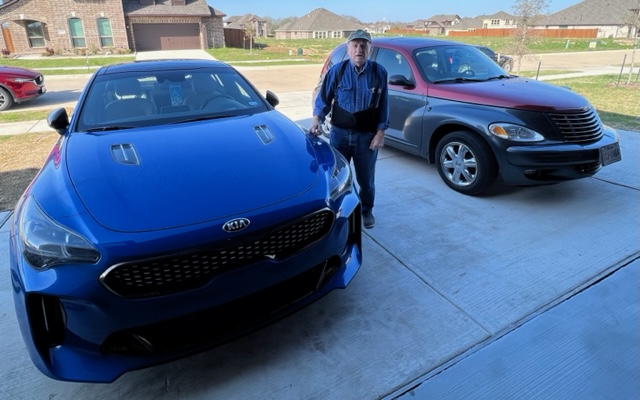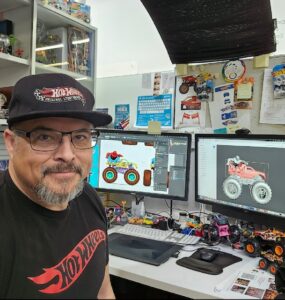Automakers are starting to consider how 47 million senior drivers are adapting to technology-laden vehicles
Most of us make plans for aging (or at least think about it), but our future behind the wheel is almost never among them. Sure, people tend to gravitate towards vehicles that are easier to get in and out of, and have either good visibility (one reason Subaru Foresters sell so well to older buyers) or great camera technology. But beyond that, what is available and what is being done for older drivers?
We wanted to explore if older adults feel that their transportation options are still viable, as well as check in with automakers to see what they are doing to meet their mobility needs. We interviewed both a cross-section of older drivers, and representatives from three major automakers, to find out how they were tackling these issues from both ends.
It should be profitable for car companies to meet the needs of aging adults, as there are 47.6 million licensed senior drivers on the road as of 2022, according to the Federal Highway Administration (FHA) and in the past ten years, the population of older drivers has increased. According to the Insurance Institute for Highway Safety, senior drivers are driving fewer miles, but are nonetheless, keeping their licenses longer.
***NOTE*** The Federal HIghway Administration considers those age 65 and older “Seniors”
Older Drivers Don’t Feel Like They know Their Cars Well
I first spoke to a few of those seniors to find out how they were feeling about their rides. They were quickly lost in that question alone. I had to rephrase with, “You know, your wheels, how do you feel about your wheels? Do you feel like you are familiar enough with your daily driver that you actually understand your car?” Their answers were a resounding, “No.”
So what is it that has them feeling lost? Linda Wise, age 69, says that neither she nor her husband can understand all the technology that is in their car. She does not feel like either of them have the knowledge to properly operate all the car’s features. Note, they drive a 2021 Toyota Highlander.

In another conversation, Cathy, age 70, driving a 2020 Acura RDX echoes the previous couple, “I drive to Dallas every day, but I don’t know half of the capabilities of this Acura.”
Regarding comfort, Raymond, age 82, tells me that he continues to drive his 2009 Chrysler PT Cruiser because it is the easiest car to get in and out of. Raymond also owns a 2021 Kia Stinger, and yet he still prefers the PT Cruiser. He isn’t even sure that he wants all the technology offered. He did, however, mention that he enjoys Kia’s Lane Keeping Assist System, noting that in a “Hot rod like that, something has to keep me in line.”

Some Manufacturers Are Embracing A Revolution Af Mobility
We asked Ford, Kia, Lexus and GM questions regarding the revolution of mobility and what manufacturers are doing, if anything, for aging drivers. GM declined to comment, noting they did not feel that they had a representative to “speak sufficiently to this topic.”
Steps Are Being Taken To Ensure That Senior Drivers Are Safe And Fluent In Technology
Lexus offers a trained “Lexus Delivery Technology Specialist” at each dealership. Cynthia Tenhouse, VP of Guest Experience for Lexus, said, “Specialists are available to answer all guest questions regarding their vehicle’s technology, and they’re available throughout the entire ownership experience. Whether it’s over the phone or in the service lane, customers just have to request to speak to the Technology Specialist, and they’ll get the help they need any time they need it.”

Lexus owners can also register for a My Lexus account online via the Lexus app.Tenhouse continues, “These provide another way for guests to get valuable information about their vehicles including technical specifications, safety features, how to videos and more.”
For guests who want to learn more about their vehicles and may not have the ability to get to a dealership or want to speak over the phone, we have a comprehensive video library on My Lexus, that covers vehicle features including navigation, Lexus interface, and safety. We also have our Lexus Connected Technology Support website where customers can enter their vehicle information, including VIN number, to learn more about their vehicle’s technology and ways that Lexus can help support throughout their ownership experience.
Ford spokesperson Andrew Murphy, says that Ford, “Offers the Driving Skills for Life program to set up new drivers or success. While this program is mainly focused on younger, new drivers, the program is open to all ages.” He adds, “Ford dealerships are equipped to offer continuing education to customers. Our philosophy of human-centered design is clearly apparent at every Ford dealership. Likewise, Ford dealers are available to answer tech-related questions and can offer hands-on learning at the dealership location to ensure customers have a successful ownership experience.”

Another way for drivers to connect to their Ford vehicles is the FordPass App, which Murphy says, “Seamlessly connects their phones to access information about their vehicles and FordPass Rewards.” Most senior drivers, when asked, were aware of apps to connect but again, do not understand the features these apps. Murphy explains, “FordPass makes it easy to check fuel/charging levels, vehicle health alerts, service history, and to schedule service and maintenance at participating dealers. The app also has complimentary remote features on equipped vehicles, such as lock/unlock, remote start, and remote trunk/tailgate open.”

One more service Ford offers is BlueCruise, a hands-free highway driving experience. This fairly new technology (2021), allows for true hands-free driving on prequalified sections of divided highway which are known as “Hands-Free Blue Zone,” making up over 130,000 miles of North American roads. And according to Murphy, “Customers can activate, renew or connect,” from the aforementioned FordPass app.

A Kia spokesperson admits, “There’s more technology in cars than ever.” Kia states that they have created a series of YouTube videos, “Designed to familiarize all drivers with technology and safety features. For example, the EV Education 101 series offers easy-to-understand tips about home charging, range expectations, and cost savings related to EVs. All of these instructional videos are available at any time and for free to all owners, and are updated with the latest information.”
Kia also encourages drivers, “To first consult their owners’ manuals, which are all available online and/or on mobile devices at the Owners Portal. They can search by make and model to try and find answers to their questions.” Kia Connect, they add, “Is available through the Kia Access smartphone app,” which is available for both Apple and Android devices. Kia confirms, “This adds a layer of assistance by allowing owners to understand exactly what’s going on with their vehicles at all times. This app is great for senior owners who may need help finding their cars in crowded parking lots using GPS, as well as reminding them to check for backseat passengers with Kia’s ‘Rear Occupant Alert,’ and also features voice assistance.

But There Aren’t Any Accessibility Packages Offered From Manufacturers
Ford mentions that they have a “Philosophy of human-centered design,” so we asked Murphy just what that means. He replied, “All our vehicles are designed with many forms of accessibility in mind…. everything from tailgate steps for shorter drivers to color contrasted infotainment screens. We want everyone to be able to get a Ford vehicle that’s right for them, and accessibility-focused designs increase access to Ford vehicles across the board with changes benefitting everyone.” Another example of this is the tactile surface found on the volume knob of an F-150, Murphy continues. “These are designed to be easily accessible for a variety of users, from those that have limited control of their hands to those that need to control the knob while wearing heavy work gloves.”
Kia says that their user experience is, “Designed to be intuitive and place most major functions within a swipe or a couple of taps.”
Ford adds to that: “Ford’s UX (User Experience) and UI (User Interface) systems are designed to be easily understood by all drivers. Ford closely matched the gestures used to control the systems with commonly used gestures in popular technology. These familiar actions such as pinch-to-zoom, scrolling, and swiping actions work to ensure that the user has a baseline of knowledge when controlling the system for the first time.”

As UX and UI have evolved, buyers, whether drivers or passengers, expect to receive the same sort of convenience and satisfaction that they get from their devices to match that of their vehicle. Ford stressed, “Now that tech like smartphones and advanced tablet devices are everyday tools, seniors are more familiar and comfortable with commonly used gestures. By reusing such gestures to control the UI and UX system, Ford works to ensure that drivers retain a baseline familiarity with common inputs, even with a new vehicle.”
What Changes Are We Seeing to Vehicles To Help With Senior Mobility?
Kia begins by offering, “Several technology features for vision. Certain Kia models, including the EV6 and EV9, feature a large central screen with an adjustable Blue Light Filter, designed to reduce eye strain. For those looking for a higher seating position and easy entry and exit, we offer the Carnival with dual, power sliding doors and an easy entry point.”

Murphy states that Ford has features in place such as, “The Pro Access Tailgate on F-150 trucks, which works to increase usability for all users, not just seniors. Likewise, Ford vehicles like Maverick, Escape and Explorer have easy slide-in seating. To ensure wide-ranging accessibility, Ford employs the use of accessibility and mobility suits during vehicle design. These suits can mimic a variety of conditions, situations, and body types so that engineers and designers get true, first-hand experience on how different people use their Ford vehicles.”
Murphy gave the example of the suit that can mimic, “A hand tremor, caused either by a medical condition or uneven terrain, to ensure that the UI/UX system responds properly, even if the tap input is a bit off from center. Ford also employs forms of digital accessibility to ensure that screens are easily readable. Color contrast and font settings alleviate undue eye strain while viewing the screen.”

What Models Are Most Popular Among Seniors?
A Kia spokesperson expressed that, “Kia models are popular among all age groups,” while Ford reiterated their human-centered design is for everyone and that, “All vehicles are designed, including seating contours, button layouts, and window switches are crafted with accessibility and ease-of-use in mind.” They believe that having this philosophy allows buyers to choose a vehicle that meets their individual needs and use cases.
Murphy’s final word: “Customers retain the power of choice regardless of their accessibility needs.” Tenhouse concludes, “From a 65-plus standpoint, the most popular vehicle in the Lexus lineup is the Lexus LS,” and adds that, “At Lexus, we pride ourselves on putting the guest first and creating customized experiences for each of our guests no matter where they are at in life.”

Automakers Are Slow To Adapt To The Ever Increasing Number Of Seniors
As the number of senior drivers increases, manufacturers need to be more innovative in their efforts to keep them, and their beloved vehicles on the road safely. With necessary training and partnerships between buyers and dealerships, this is a very attainable goal. Let’s keep those ‘Golden’ years ‘Golden!’

